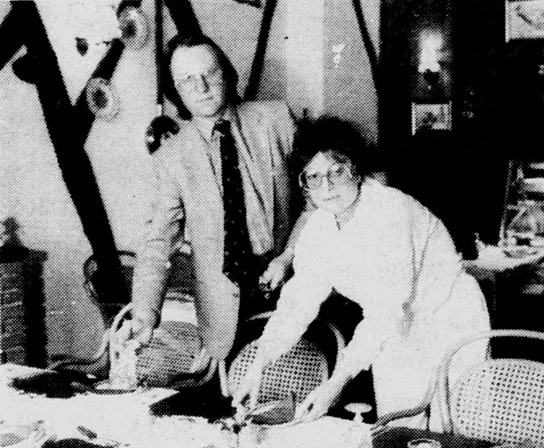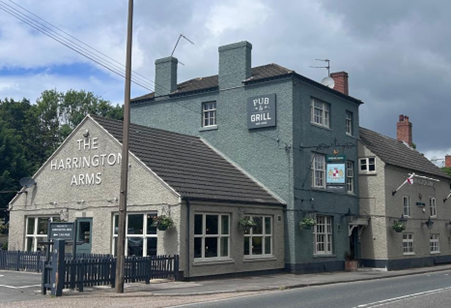The Harrington Arms was a coaching inn, built in the early 18th century (if not earlier) and used as a turnaround for coaches on the Lenton to Sawley turnpike (which opened in 1758). After refreshments at the Inn the passengers crossed the Trent by ferry and joined coaches on the Leicestershire side.
After the Harrington Bridge opened in 1790 the Inn is likely to have remained as a regular stop on the turnpike. Originally it was known as the Blackamoor’s (or Blackmoor’s) Head. ‘Blackamoor’ referred to someone whose family originated in Africa but lived in Southern Europe. The term came from Spain where many black people had come over during the occupation of Spain by the Muslim Moors from Northwest Arabia. So, the sign of the ‘Blackamoor’s Head’ may have been like the ‘Saracen’s Head’ or ‘Turk’s Head’.
Incidentally, there was also a Blackamoor’s Head Inn just outside the small village of Sawley in North Yorkshire. There’s another Sawley in Lancashire, where the pub (The Spread Eagle) is also near an important old bridge.

The Inn by the Trent was renamed the Harrington Arms around 1807. Probably to gain favour with the Earl of Harrington (who owned the pub and most of the land in the village), or to reflect its proximity to the Harrington Bridge.
The first landlord we know of was a Mr Cook, who ran the Inn in the late 1790s to around 1801. He was replaced by Lewis Taylor, who changed the name and was there until at least 1812.
The next name we have is William Simpkin, who had the Harrington from the mid-1820s. After he died in 1842 his 2nd wife, Lettice Simpkin, ran it for another 23 years, as well as running a farm of 83 acres.
After she died in 1865 the licence passed to one of their sons.
William Smith (1854-1947) remembered that the Harrington was a calling place for road coach horses until the 1850s. The last ostler was John Hunt, who went afterwards to the Trent Bridge Toll Gate.
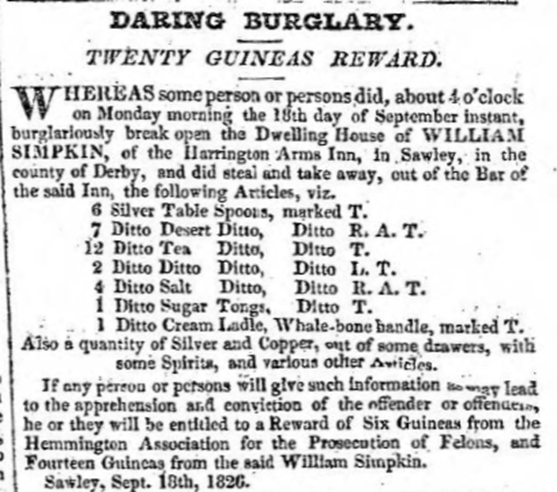
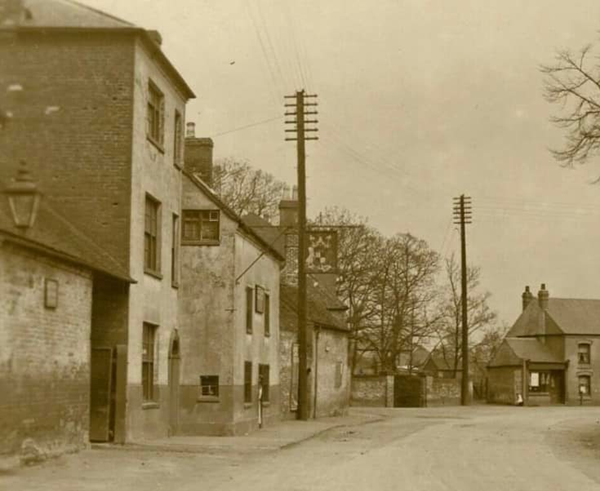
Joseph Sedgley took over in about 1869. In 1873 he was in trouble for having an unstamped measure. After Joseph died in 1877 his widow Sarah took over.
Between 1884 and 1888 Thomas Bridger was the landlord. Two of his children went to the infant room at the National School on Cross Street.
In May 1888 James Allen junior (son of James Allen of the New Inn) took over.
At the time the host of the Harrington Arms controlled the fishing on the north bank of the Trent and issued angling permits for 6d per day.
In 1891 James Allen returned to his original trade as a butcher and handed the Harrington over to Joseph Clifford. After Joseph’s death in 1918, his son John Albert Clifford took over. His daughter married Joseph Stevenson Grammer of Grounds Farm in 1897.
From 1920 the Harrington estate leased the pub to Offlers Brewery (Derby). When the freehold was sold in 1927 the Clifford family may have bought it. John Albert Clifford was still the landlord in 1941.
The stone steps in the yard of the Harrington, sometimes described as being a horse mounting block, were actually installed by the Cliffords to facilitate the loading of their milk churns onto a dray.
Around 1945 the Harrington was sold to Kimberley Brewery. George William Kinsey Howarth and his wife Sadie took up the tenency when he left the Royal Artillery after the war. They had soldiers and their families staying as part of what might have been an Army repatriation package. At least one of them had survived a Japanese prisoner of war camp. Around 1952 the brewery moved George Howarth to Darley Dale and replaced him with Reginald Roper. From 1955 to the early 1960s the Harrington was run by Fred & Constance Whitworth, then by Steve Gunn.
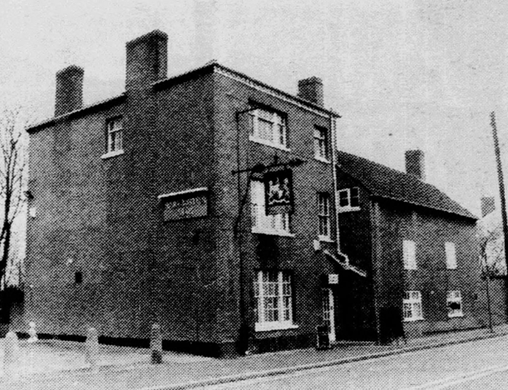
For 29 years from December 1968, it was run by John and Dot Matthews. In 1997 they moved next door, to the White House Hotel.
